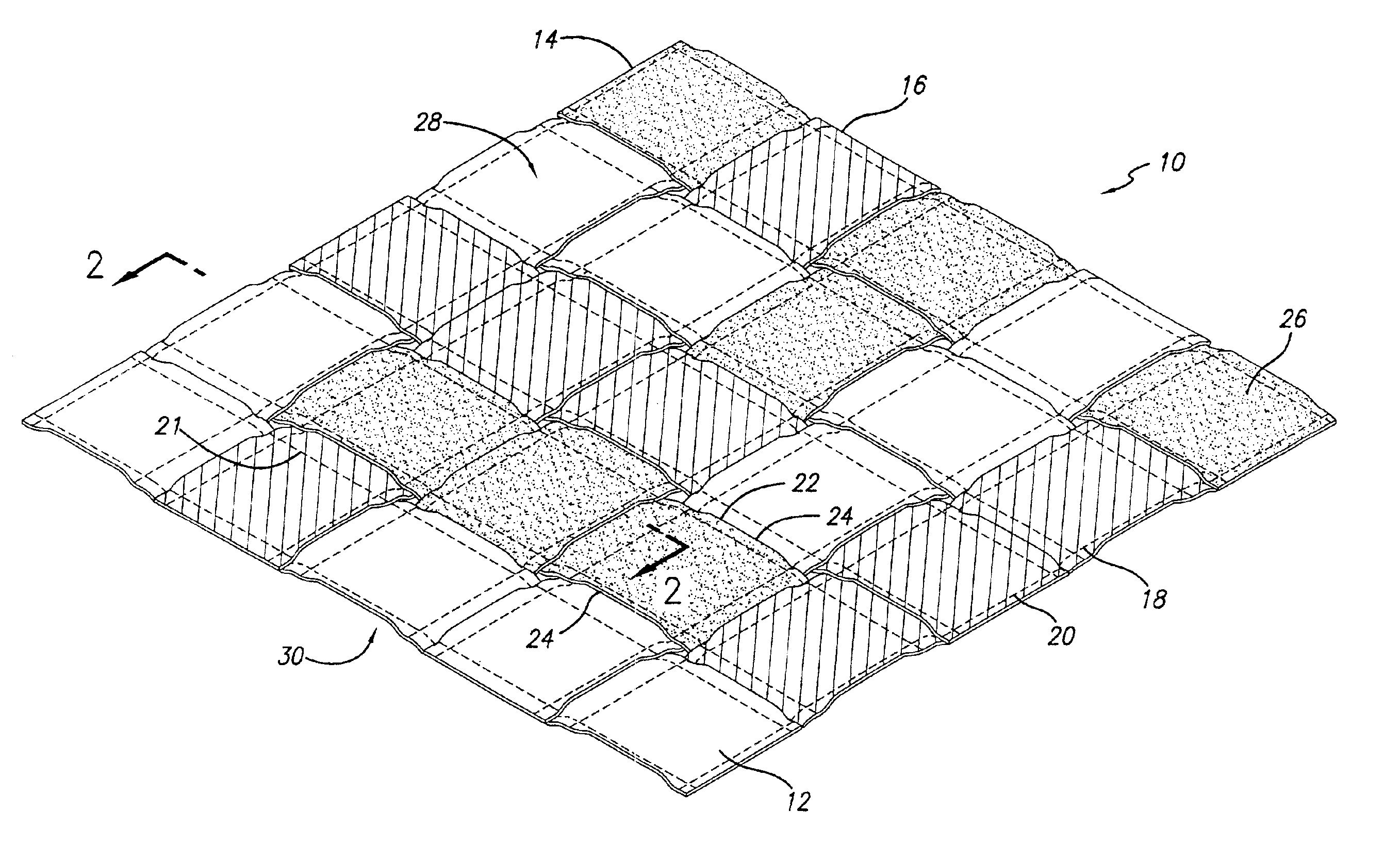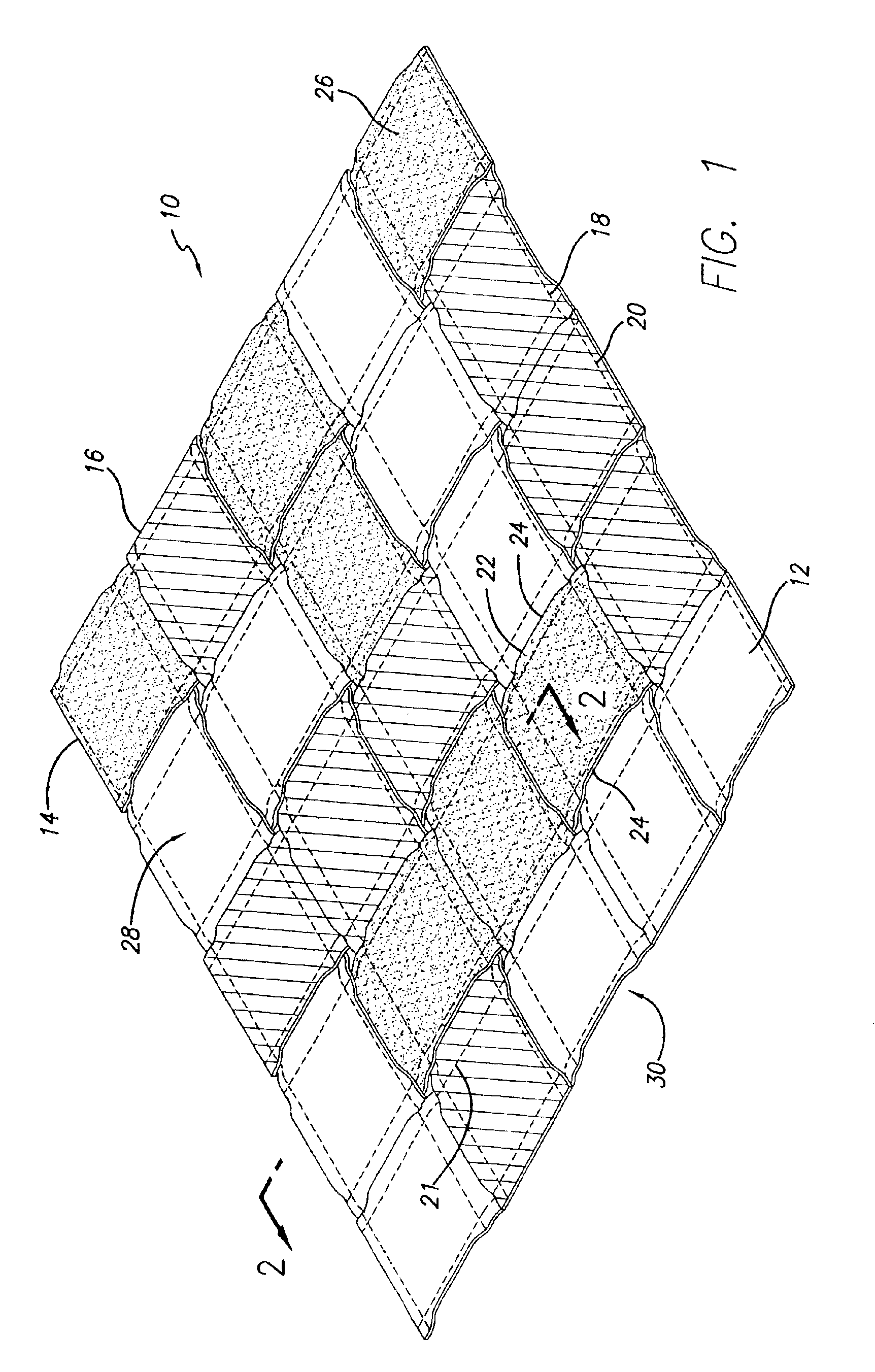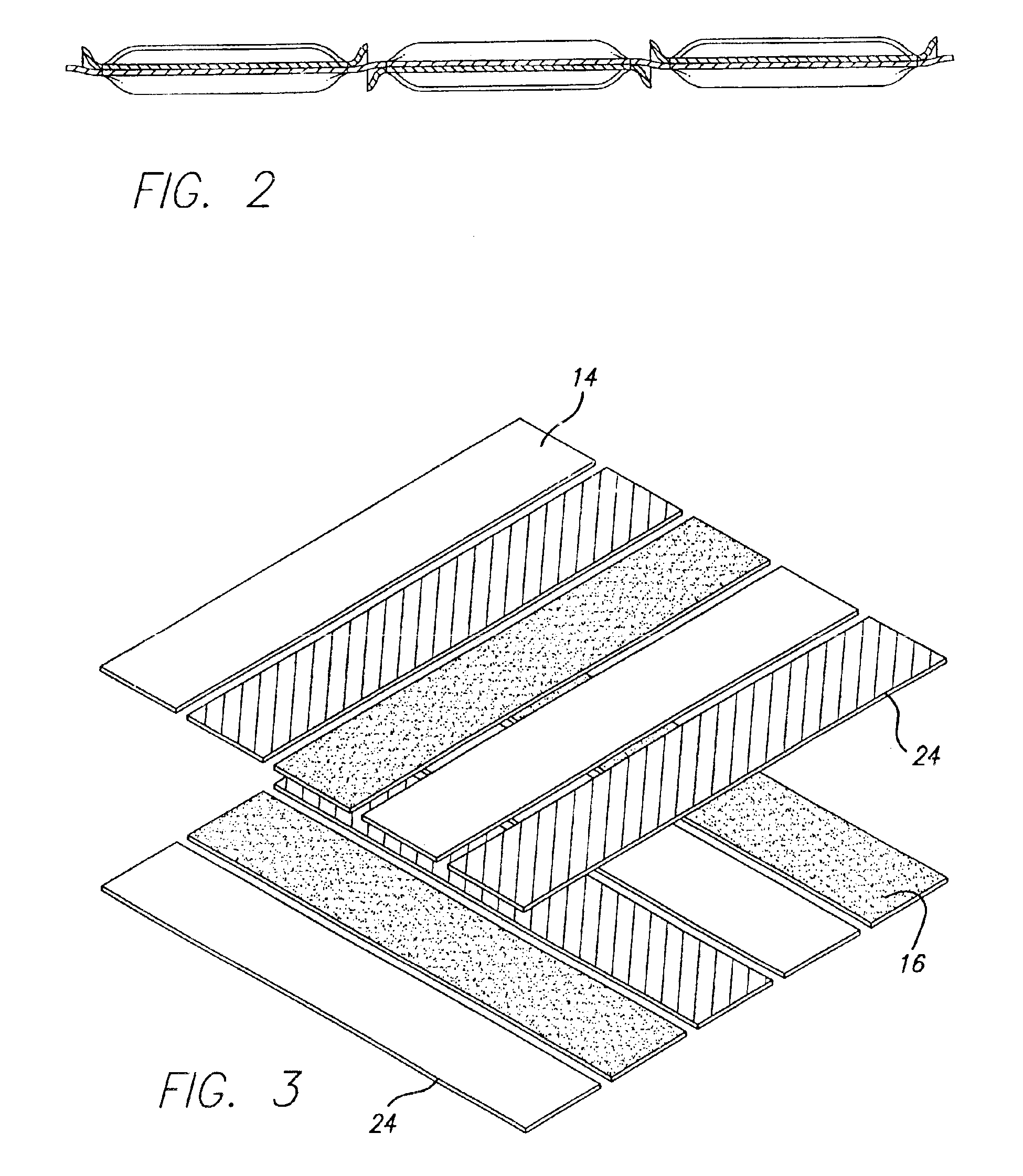Patchwork fabric article and method
a technology of fabric articles and patchwork, applied in the field of textiles, can solve the problems that the patchwork quilts of machines are not attractive or highly regarded, and achieve the effect of reducing the number of stitches
- Summary
- Abstract
- Description
- Claims
- Application Information
AI Technical Summary
Benefits of technology
Problems solved by technology
Method used
Image
Examples
Embodiment Construction
[0022]Referring more particularly to the drawings, FIG. 1 is a perspective view of the present invention depicting patchwork textile fabric article 10. Textile fabric article 10, which can constitute any type of cloth covering for a bed (e.g. a quilt) or a blanket throw, which can be used for some other purpose, is comprised of a plurality of fabric strips 12 sized according to the dimensions of the covering or textile fabric article desired. For example, a quilt approximately seven (7) feet by seven (7) feet might be formed from a series of fourteen (14) individual strips 14 each six (6) inches wide and seven (7) feet in length. Each strip 14 is placed juxtaposed to the next. A second series of fourteen (14) individual strips 16 each six (6) inches wide and seven (7) feet long is placed over and situated transverse to the first series of strips 14. Each strip 14 is then interlaced with strips 16, as shown in FIG. 4, until all the strips have been interlaced and caused to lay relati...
PUM
 Login to View More
Login to View More Abstract
Description
Claims
Application Information
 Login to View More
Login to View More - R&D
- Intellectual Property
- Life Sciences
- Materials
- Tech Scout
- Unparalleled Data Quality
- Higher Quality Content
- 60% Fewer Hallucinations
Browse by: Latest US Patents, China's latest patents, Technical Efficacy Thesaurus, Application Domain, Technology Topic, Popular Technical Reports.
© 2025 PatSnap. All rights reserved.Legal|Privacy policy|Modern Slavery Act Transparency Statement|Sitemap|About US| Contact US: help@patsnap.com



